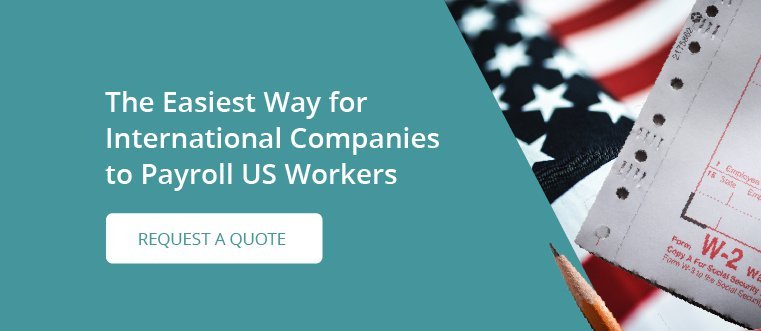
If your business has international operations, you’re likely all too familiar with the uncertainties of the exchange rate. If you’re expanding your business into another country, the fluctuating dollar may be top of mind, especially when you think about how you’re going to pay your international employees. You may have the same concerns if you’re thinking of hiring remote employees internationally.
Should you pay employees in local currency or USD? How does the currency exchange affect an employee's salary and your ability to pay it? Today, the exchange might be high, but it might dip tomorrow. Your buying power can increase and decrease without notice. Managing these currency fluctuations is important. Here are a few tips you can use to manage the ups and downs of a fluctuating dollar.
1. Pay Employees in the Local Currency
One issue employers sometimes face is the question of which currency to use to pay employees. Many favor paying in their own currency versus the local currency. This is often the case for employers backed by a relatively stable currency, such as the US dollar.
Almost every other currency experiences volatility, although to varying degrees. The Canadian dollar, for example, has been weak against the US dollar for some time now, although there was a period when Canadian currency achieved parity with the US dollar. The euro is traditionally very strong, but economic crises in Greece, Italy, and other EU countries have affected the currency exchange rate.
Paying in the local currency often isn’t attractive for the employer because its value against the home currency may increase or decrease. Nonetheless, it keeps your employees’ wages stable against these changes.
In some countries, you’ll be obligated to pay employees in the local currency by law. Always check the regulations in the country your employees live and work in to ensure compliance. Even if you’re allowed to pay in another currency, it’s often a better idea to pay in the local currency.
2. Keep an Eye on Currency Inflation
Currency inflation erodes the buying power of currency within its home economy. Argentina in 2018 provides an excellent example. Consumer prices increased by over 47 percent. What does that mean? If you paid your employees one Argentine peso, they could buy 47.6 percent less with it in 2018 than they could in 2017. Their salary would thus be worth significantly less than it seems on paper. In 2019, it declined further by 25%.
One way to deal with this is to issue bonuses or adjustments on a regular basis. You may opt to do this annually or even quarterly to keep pace with inflation. This allows your employees’ wages to maintain their buying power.
3. Work with a Professional Employer Organization (PEO)
What else can you do to ensure you’re dealing with currency fluctuation adjustments properly? Your best option may be to work with a professional employer organization (PEO). PEOs are experts in regulations, payroll, and compliance in the country you’re operating in or looking to expand to. They can advise you on law and compliance, as well as help you monitor matters of currency. Professional employer organizations have already helped other companies like yours through currency fluctuation adjustments, and they know the best way to handle them.
4. Choose What to Protect
If you offer your employees packages, such as healthcare benefits or assistance with the costs of living, you’ll need to choose which elements of this package to protect. Protecting salary is usually a good choice. You may decide to let the value of other benefits you’re providing erode in order to keep employees’ salaries in line with inflation. Your PEO can help guide this decision.
5. Establish a Guaranteed Exchange Rate
Another thing you can consider doing if you want to protect your company and your employees’ salaries against currency fluctuation adjustments is to establish a guaranteed exchange rate for your employees. This can protect against small fluctuations in the market; however, it poses a larger risk if the currency experiences extreme changes.
If you’re not sure what your best option is, get in touch with experts at The Payroll Edge. We can help you evaluate the situation and determine the best solution for your business.




 Download Now
Download Now 

